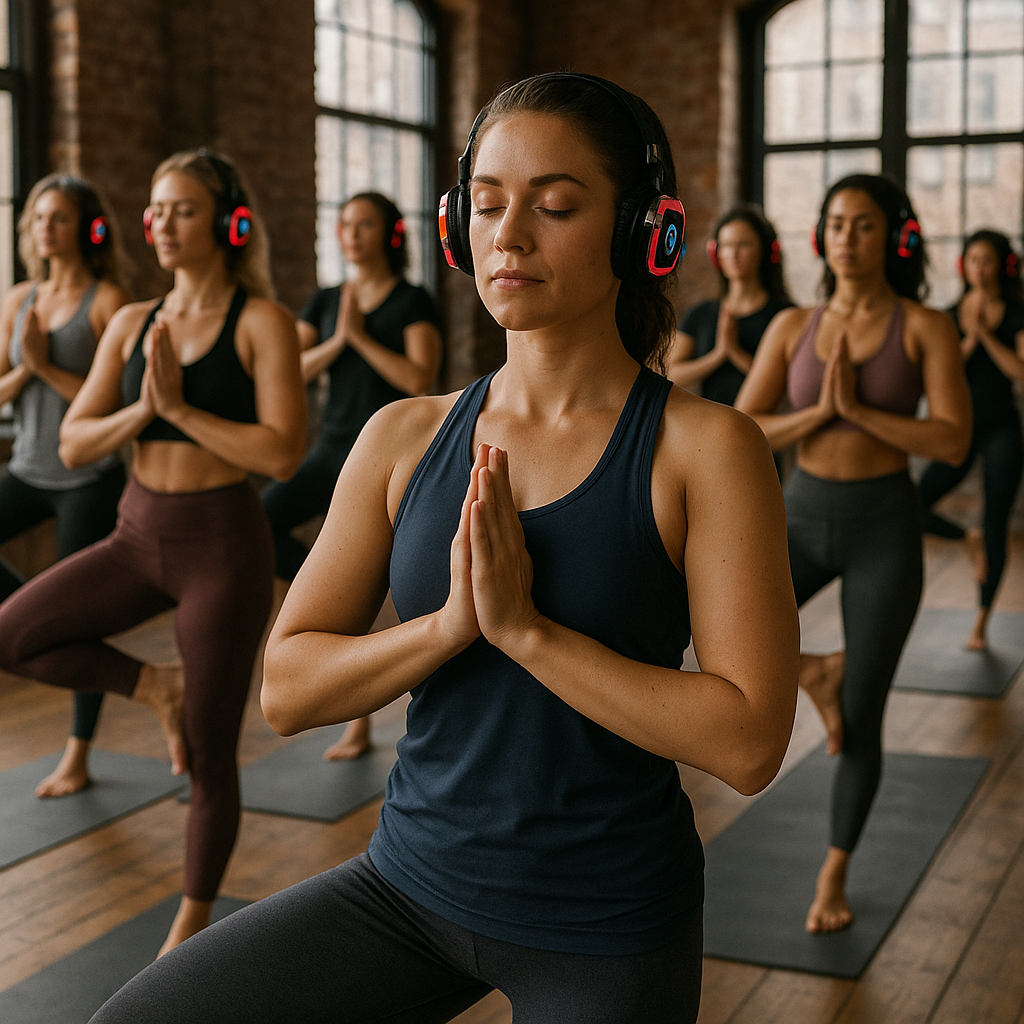
Yoga has always been about mindfulness, breath, and connection—but in recent years, a new twist on this ancient practice has been making waves: Silent Disco Yoga. By blending traditional yoga with the immersive experience of silent disco headphones, this fresh format is popping up in parks, rooftops, and beaches across the country. But how does it really compare to your standard studio session?
Let’s dive into the five biggest differences between Silent Disco Yoga and Traditional Yoga, and why more instructors, students, and event organizers are embracing the headphone-powered alternative.
Silent Disco Yoga: Every participant wears wireless headphones that stream the instructor’s voice and curated music directly into their ears. Whether you're in the middle of a bustling city or an open-air park, you're immersed in the sound—and nothing else.
Traditional Yoga: Most classes rely on ambient speakers, which can get lost in large spaces or outdoors. You may miss cues, especially in group or open-air settings, and external noise can break your focus.
Why It Matters: Better sound = better flow. Headphones keep you connected from the first inhale to final savasana.
Silent Disco Yoga: Without the need for speakers or power outlets, classes can happen anywhere—beaches, rooftops, gardens, even festivals. All you need is a transmitter and space to stretch.
Traditional Yoga: Typically restricted to indoor studios or quiet environments where sound can carry. Outdoor sessions often require permits, electricity, and noise control.
Why It Matters: Silent disco tech unlocks creative, Instagram-worthy locations that draw bigger, more enthusiastic crowds.
Silent Disco Yoga: Music and voice stay within the headphones. This keeps the peace in noise-sensitive neighborhoods, public parks, or corporate venues—making it easier to get event approval.
Traditional Yoga: Loudspeakers can disturb nearby spaces, especially in residential areas or during early morning/late night sessions.
Why It Matters: Want to host a sunrise class on a hotel rooftop or a twilight flow at a wedding venue? Silent disco yoga makes it possible—without the neighbors calling in.
Silent Disco Yoga: Everyone controls their own headphone volume. Newbies can crank up the instructor's voice, while veterans can focus on the music or their breath.
Traditional Yoga: Sound levels are fixed. If you're too far from the front or have hearing challenges, you’re left guessing what pose comes next.
Why It Matters: Personalized sound makes the experience more inclusive—and more empowering for every student.
Silent Disco Yoga: With LED-glowing headphones, curated playlists, and ambient soundscapes, each session feels like a mini-retreat. It’s energizing, meditative, and visually unforgettable.
Traditional Yoga: Familiar and serene—but not always memorable. Especially for events or one-time pop-up classes, it can be harder to make an impact.
Why It Matters: If you're looking to make your next yoga event stand out, this is the kind of vibe people post about, talk about, and come back for.
While traditional yoga will always have its place, Silent Disco Yoga offers a next-level experience that’s immersive, flexible, and unforgettable. Whether you're a teacher looking to expand your offerings, an event planner crafting a unique wellness activation, or just someone curious about trying something new—silent disco yoga is worth rolling out your mat for.
🎧 Ready to bring Silent Disco Yoga to your next class or event?
Get a free quote from Silent Disco Party Rentals and start planning something unforgettable.